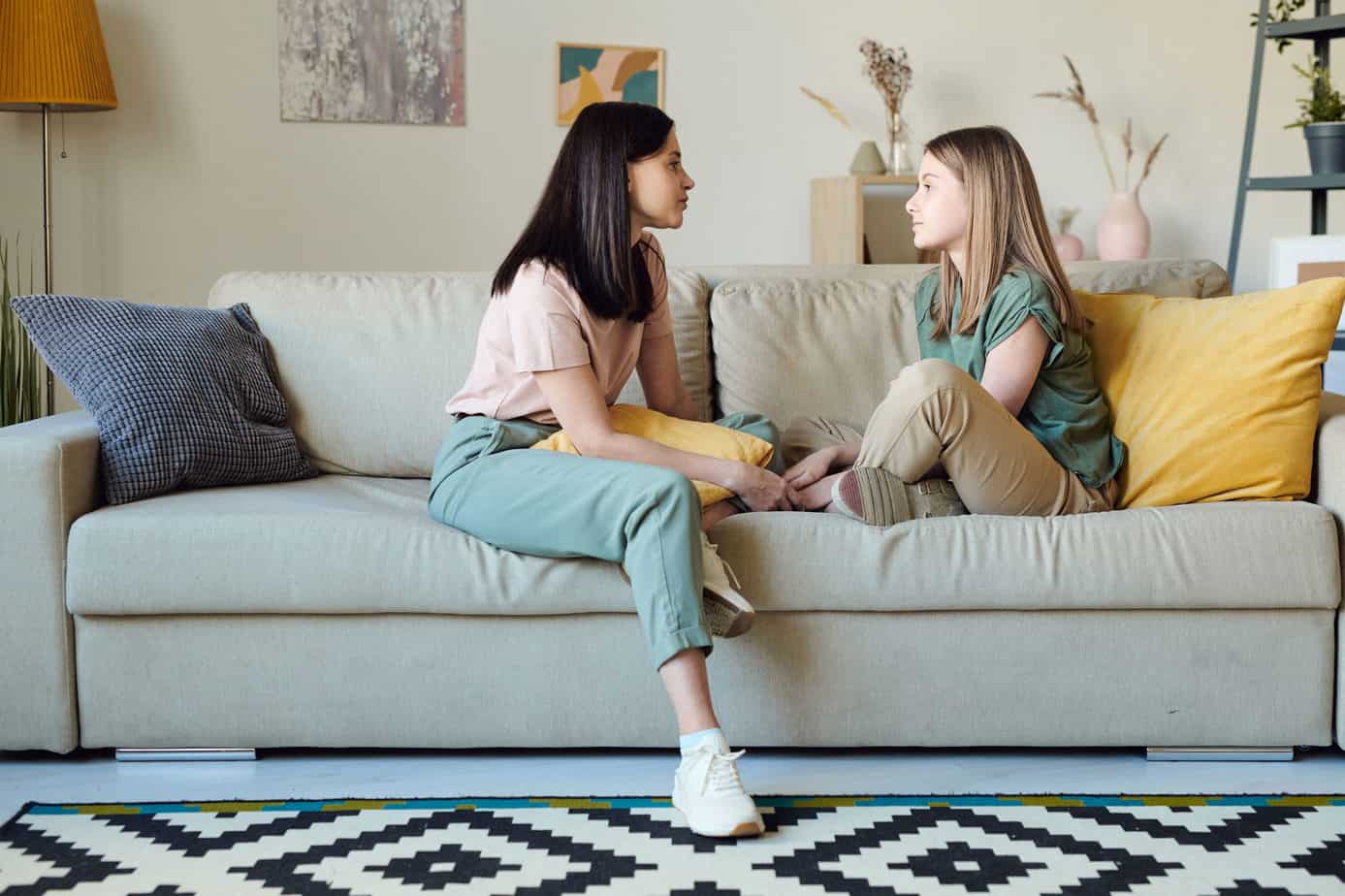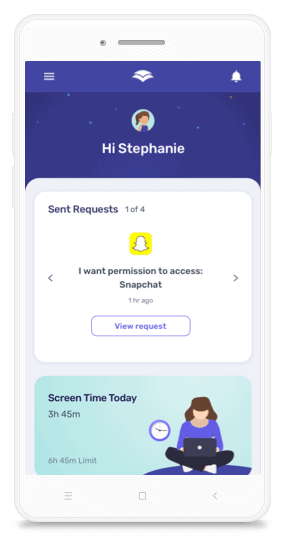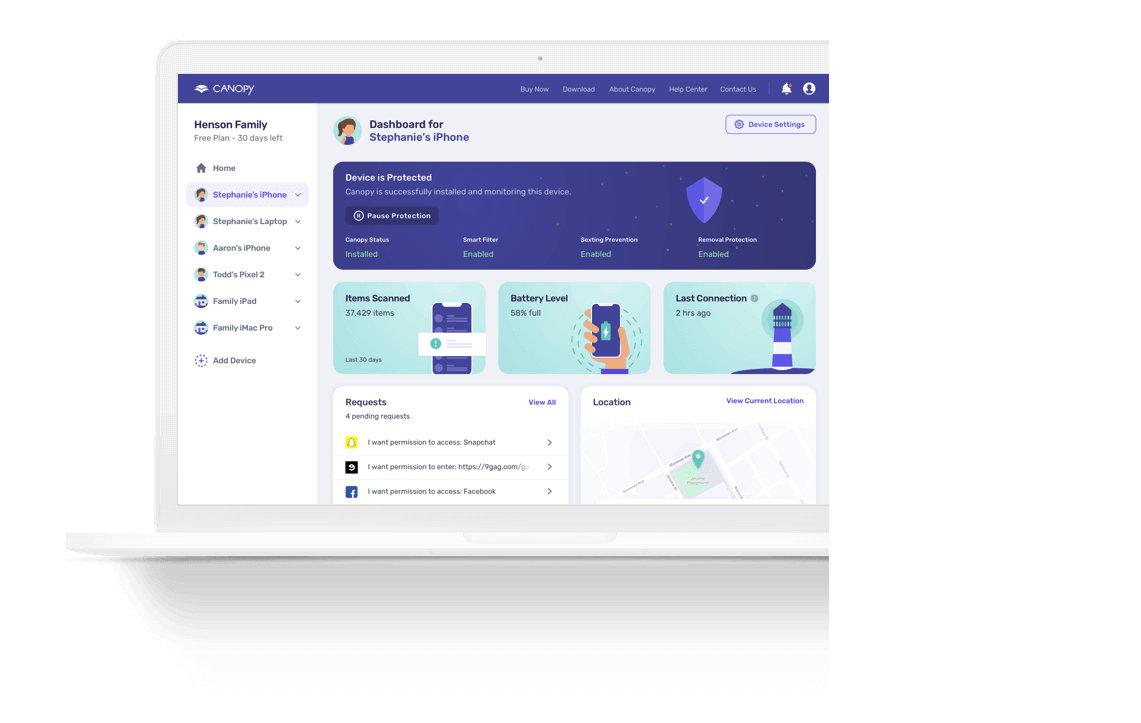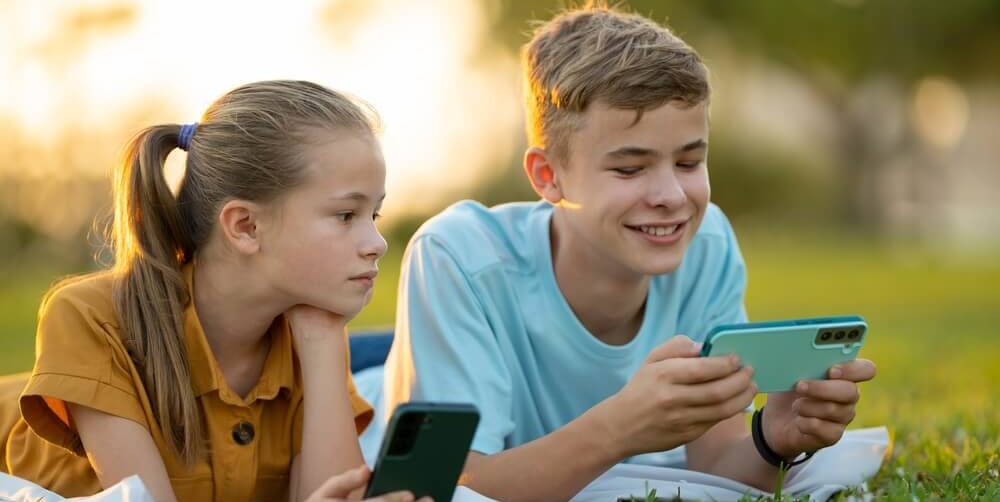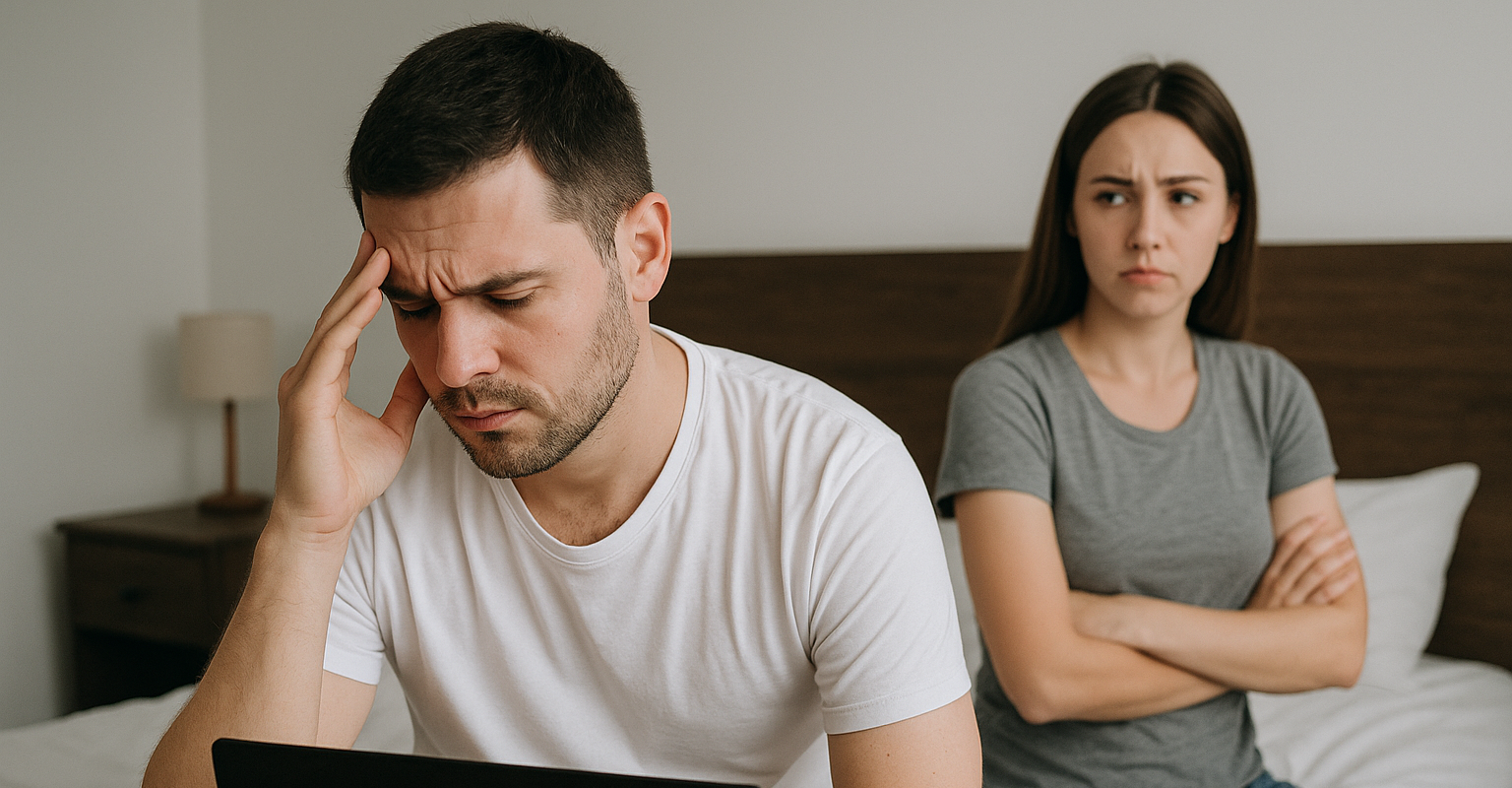If you discover or suspect kids watching porn in your home or classroom, take a breath. You’re not alone, and you’re not a bad parent or teacher. In today’s attention economy, sexual content can reach children long before they go looking for it – through group chats, algorithmic “recommendations,” pop-ups, and link chains. The important thing isn’t what they saw once. It’s what you do next.
This guide will tell you what you need to know about the impact of seeing online pornography on children, and how to respond to a child watching porn – with clear language, practical scripts, and device-level guardrails that make the healthy choice the easy choice.
Can kids watch porn?
Short answer: they can access it unless we make access difficult and short-lived. Smartphones, private browsing, high-speed networks, and infinite feeds create low-friction pathways to sexual content, making it essential to learn how to block porn on your phone before issues arise. Even a single mistyped search or a friend’s share can open a door. That’s why your plan needs two layers:
- Skills & scripts (media literacy, consent language, how to exit and tell).
- Systems & safeguards (real-time filtering, sleep-first device rules, and algorithm hygiene, that usually the best screen time control apps include).
Remember: curiosity is normal. Secrecy and shame are the real risks. Your goal is to replace silence with coaching and boundaries.
Is it normal for a 12-year-old to watch?
“Normal” isn’t the right word—“common exposure” is more accurate. Many kids see something by late elementary or early middle school, often by accident. Treat first encounters as teachable moments, not scandals. The key is short exposure + quick disclosure: get out fast, tell a trusted adult, and reset the device environment so it’s less likely to happen again.
“11-year-old looking at inappropriate things”
This exact phrase pops up because 10-12 is a high-risk range: kids are curious, tech-savvy, and gaining privacy. Your best move is to normalize conversation (“I’m a safe adult”), rehearse a simple exit plan (below), and tighten nighttime and bedroom rules for all devices – without shaming your child.
Signs of pornographic exposure in children
Every child is different, and none of these signs “prove” anything on their own. But if a few of these boxes are checked, the situation is worth attention and a calm check-in:
- New secrecy around devices. Closing tabs fast, hiding the screen, using headphones more, or preferring isolated viewing spaces (bedroom, bathroom).
- Sleep changes or midnight phone activity. Tired mornings, new irritability, or devices charging in the bedroom despite rules.
- Sexualized language or jokes beyond usual maturity. Repeated references to acts or terms they likely wouldn’t know from age-appropriate sources.
- Shifts in mood. Spikes in shame, anxiety, or withdrawal—especially if they’re spending more time alone online.
- Big changes to search history or a lot of “no history.” Frequent clearing, use of private mode, or newly installed browsers.
- Peer reports. Other kids mention a link, a group chat, or a dare.
- Curiosity that feels urgent or secretive. Asking questions but resisting conversation. Fixation on certain thumbnails or creators.
Developmentally typical vs. concerning
- Typical: giggles about body words, one-time curiosity, telling you they saw something weird or uncomfortable.
- Concerning: secretive, frequent viewing; aggressive or degrading themes; late-night binges; refusal to talk; escalating risk (DMs with strangers, sharing images).
A gentle way to check in
Try: “You may run into inappropriate images or videos online – even when you’re not looking. If that happens, you’re not in trouble. Can we talk about what you’ve seen lately and how it made you feel?”
Then listen more than you speak. If something concerning comes up, move to the response plan below.
How to prevent porn exposure in kids
Prevention is a layered system, not a single setting. Think of it as lowering the probability of exposure and the duration when it happens.
1) Sleep-first device policy
- No phones or tablets in bedrooms overnight; charge in a common area.
- Use built-in downtime modes to lock distracting apps after lights-out.
- Give kids an analog alarm clock so “I need my phone for my alarm” isn’t the loophole.
- Add a visible “bedtime basket” for devices – one place, every night to help detox child from screen time and reinforce predictable routines..
2) Real-time content filtering (not just domain lists)
Choose a modern parental control app that analyzes images and pages as they load, across browsers and supported apps. Domain lists alone miss social feeds, embeds, and new sites. Real-time detection reduces “oops” moments and shortens exposure time.
3) Algorithm hygiene
- Turn off autoplay and personalized recommendations where possible, especially on platforms where teens might stumble onto porn on Pinterest, porn on Spotify, or porn on Google Maps.
- Aggressively tap “Not interested” on suggestive content and clear watch histories.
- Unfollow sexualized accounts, especially on platforms like Instagram or TikTok where how to block adult content on Instagram and how to block content on TikTok should be part of your tech setup. Follow creators who model creativity, kindness, and learning.
- On short-video platforms, consider a “clean account” approach: new profile, zero follows, and tight time limits.
4) Family red – lines a family tech plan
Write two or three clear rules everyone can remember, such as:
- Devices stay in shared spaces after 9 p.m.
- No private browsing. Parents can inspect the history on request.
- Ask before downloading new apps, and install with an adult present.
- No new messaging groups without telling a parent first.
5) Teach the “see something” plan
Kids need a script, not a lecture. Ours is STOP–MOVE–TELL:
- STOP: close the app or tab immediately.
- MOVE: change rooms, get water, or wash your face.
- TELL: talk to a parent, teacher, or coach; you’re not in trouble.
Role-play it once this week. Practice makes honest disclosure more likely and builds confidence in how to respond when encountering things like OnlyFans addiction.
6) School partnership
Ask how your child’s school teaches media literacy and consent, and how they respond to image-based abuse or sextortion. Align home and school messages so kids hear the same language in both places. Share a one-page family plan with the homeroom or counseling staff if you discover persistent issues.
7) Advanced device setup (quick hits)
- iOS/Android: disable private browsing, restrict app installs, set content limits.
- Chromebook/Windows: create child accounts, block unneeded browsers, and pin homework apps to the dock/taskbar.
- Smart TVs & consoles: log out of adult accounts, turn off autoplay, and review app ratings – HBO Max parental controls and Peacock parental controls are good places to start.
- Router/DNS: change the admin password.
- Friend devices: teach kids to say, “Let’s watch on my phone in the kitchen,” or “I’m not allowed to use private browsers.”
Age-tailored conversation tips (use what fits your child)
- Ages 6–8: Keep it simple and concrete. “If you see a picture or video of private parts, close it and tell an adult. Private parts are private.” Use body-safety language they already know.
- Ages 9–12: Add nuance. “Online videos are made to get clicks, not to teach. They often skip consent. If you’re curious or confused, I’m a safe person to ask.” Practice the STOP–MOVE–TELL script together.
- Ages 13–15+: Emphasize consent, respect, and digital permanence, including open discussions about porn in relationships and why people watch porn. Talk about deepfakes, sextortion, and how to support a friend who’s pressured to share images. Affirm that curiosity doesn’t have to become secrecy.
How to respond to a child watching porn
When you realize your kid is watching porn, your response teaches more than any lecture. Use this six-step CALMER playbook the first day, then follow up the next:
C — Calm your nervous system. Take two slow breaths. Sit down. Lower your voice. Your calm tells your child they are safe to be honest.
A — Ask, don’t accuse. “I noticed some links in your history. Can we talk about what you saw and how it felt?” Your job is to understand context, not extract confessions.
L — Listen for feelings. Were they curious, scared, surprised, grossed out, or excited? Validate emotions without endorsing the content.
M — Map what happened. Where did it show up (DMs, search, a friend’s phone)? How long did it last? Did they try to stop? Do they feel stuck?
E — Establish next-step boundaries. Move devices out of bedrooms, turn off autoplay, tighten app installs, and consider using iPhone or Mac porn blocker tools if you haven’t already.
R — Repair and re-educate. Explain that porn is entertainment, not education, and often lacks consent and mutual care. Reaffirm family values: dignity, respect, and kindness.
Scripts that reduce shame and open dialogue
- “You’re not in trouble for being curious. It’s normal to feel drawn to new things online. My job is to help you make sense of what you saw and to keep your devices safer.”
- “Some videos online show rough or disrespectful behavior as if it’s normal. In real life, we check in, use words, and stop the moment someone isn’t comfortable.”
- “If you see something again, close it, come find me, and we’ll handle it together.”
What not to do
- Don’t launch into punishments you can’t sustain.
- Don’t shame or label your child.
- Don’t pretend it didn’t happen; silence makes secrets grow.
Day-two follow-up (10 minutes)
- Review the changes you made (filtering, schedules, shared-space devices, blocking adults websites on Google Chrome).
- Agree on two red lines to try for a week (examples: no headphones after 8 p.m., or YouTube only in the living room).
- Invite ongoing check-ins: “Next Sunday we’ll do a two-minute review. How did the plan work? What should we tweak?”
If the kid was caught watching porn at school
- Ask for context from staff without defensiveness and loop in the counselor.
- Focus on teaching, not humiliation: a short reflection, a tech reset, and a clear plan beats public shaming.
- Align school/home: same language (STOP–MOVE–TELL), similar device boundaries, and a single adult contact for follow-ups.
A 48-hour reset (parents’ checklist)
- Tonight: remove devices from bedrooms, enable downtime, and install real-time filtering.
- Tomorrow: practice STOP–MOVE–TELL, set two red lines, and explore how to stop watching porn methods as part of the follow-up.
- Day 2: audit social follows; swap in positive feeds (sports, art, science, faith, etc.).
A 30-day maintenance plan
- Weekly 10-minute review, same day/time.
- One “tech hygiene” task per week (clear history, reset passwords, prune follows).
- One positive anchor per week (game night, hike, volunteering).
Consequences of online pornography on children
Not every exposure leads to harm, and one accidental glimpse usually isn’t a crisis. Risk rises with early age, frequency, violent or degrading content, and when porn becomes a primary coping tool for stress or loneliness. Here’s what to watch for, and how to respond:
1) Skewed expectations about bodies and relationships
Children may absorb unrealistic scripts about pleasure, part of the broader concern with what does porn do to the brain. Response: teach media literacy in simple terms, emphasize enthusiastic, ongoing consent, and model respectful communication at home.
2) Mood and motivation changes
Some kids feel shame, anxiety, or isolation after viewing, while others chase novelty to escape boredom. Response: normalize conversation, strengthen sleep and routine, and offer quick coping swaps (walk, water, deep exhale).
3) Escalation and secrecy
Novelty drives attention online. Without boundaries, kids may escalate to more extreme content or hide use. Response: reinforce red lines, keep devices in shared spaces, and use real-time filtering to shorten exposures.
4) Social and online harms
Sextortion, image-based abuse, and deepfakes are real risks in youth spaces. Response: teach kids never to share images. If pressured, document, block, report, and tell a trusted adult immediately. Loop in school administrators and, when necessary, law enforcement.
5) Impact on sleep, focus, and school
Late-night viewing or compulsive scrolling can disrupt sleep and reduce attention for learning, especially when platforms like YouTube aren’t blocked. Response: prioritize the sleep-first device policy and add morning routines that build momentum for the day.
6) When professional help is needed
If your child feels out of control, distressed, or stuck in secretive loops, consider a clinician who understands adolescent development and digital behaviors. Therapy can build coping skills and reduce shame for both kids and parents.
What about an 11-year-old looking at inappropriate things?
This phrase shows up in search because late elementary and early middle school are high-risk ages: kids are curious, tech-savvy, and gaining privacy. Treat the first discovery as a chance to reset your home’s digital norms:
- Move devices out of bedrooms, especially during growth spurts when sleep is fragile.
- Use family-wide language: “Our home protects attention and kindness.”
- Rehearse the STOP–MOVE–TELL plan so it’s automatic.
- Keep consequences teaching-oriented, like using a text monitoring app or supervised screen time, rather than as punishment.
For co-parents, grandparents, and caregivers
Consistency beats intensity. Share your two or three red lines and keep them the same across homes when possible. Grandparents and sitters should know: no devices in bedrooms, no private browsing, no new apps, and how to respond if a kid watching porn situation arises. A laminated one-pager on the fridge can save everyone a lot of awkwardness.
For faith-based or values-focused homes
Tie technology choices to your family’s deeper values – dignity, respect, privacy, kindness—rather than fear. Kids cooperate longer when rules feel like care, not control, so tying boundaries to values helps more than simply asking if watching porn is normal or if porn is cheating. Rituals help: device-free dinners, a walk after school, shared weekend projects. These positive anchors shrink the space where unhealthy habits grow.
Protect the plan you just made. Canopy’s real-time filtering uses on-device intelligence to analyze images and pages as they load, in browsers and many apps, so you’re not relying on outdated site lists. That means fewer accidental exposures, shorter viewing windows, and less late-night negotiation.
You can customize settings, set device schedules, and get alerts that support coaching over shaming.
FAQs
Is it normal for a 12-year-old to watch porn?
It’s common for kids around this age to encounter sexual content online – often accidentally. Curiosity is normal, and secrecy and shame increase risk. Prepare your child with scripts and guardrails rather than panic.
Is it illegal for kids to watch porn?
In many places, minors are not legally permitted to access pornography. Laws and platform policies aim to restrict it. Details vary by country and state, so treat your home rules as the front line while you follow local guidance.
Can kids watch porn on “safe” platforms?
Yes – short-form video apps, messaging, and image search can surface explicit or suggestive content. Turn off autoplay, clear watch histories, and use real-time filtering wherever possible.
What percent of teens watch porn?
High-quality surveys since 2020 suggest a significant share have seen pornography at least once, with many reporting accidental exposure on mainstream platforms. Exact percentages vary by age, country, and survey methods.
Can teens watch porn?
Legally, minors are generally not permitted to access pornography; many countries and U.S. states have moved toward stricter age verification. Families can and should set home rules that reflect their values and local laws.
What’s the fastest way to block porn right now?
Install a real-time filter on every device, remove phones from bedrooms tonight, and set two family bright lines you’ll actually keep this week.
